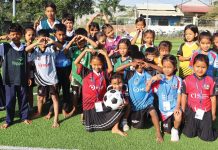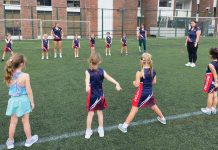 ANZA Nippers summer break hit at exactly the same time that the devastating oil-spill induced a closure of all Singapore’s beaches. As expat families ventured on holiday, efforts to restore Sentosa’s shores began straight away. Thanks to such a diligent clean-up strategy, the beaches are now back to their best and so too is ANZA Nippers. Our next term began on Sunday, 1 September at our excellent new location, Ola Beach Club.
ANZA Nippers summer break hit at exactly the same time that the devastating oil-spill induced a closure of all Singapore’s beaches. As expat families ventured on holiday, efforts to restore Sentosa’s shores began straight away. Thanks to such a diligent clean-up strategy, the beaches are now back to their best and so too is ANZA Nippers. Our next term began on Sunday, 1 September at our excellent new location, Ola Beach Club.
Due to the time away from the ocean, we went digging into the inspiring and rich history of surf lifesaving clubs in Australia. After all, without them, ANZA Nippers would not be where it is today.
The early days
Amazingly, in the early 20th century, it was illegal (under the Police Offences Act of 1838) to swim off Sydney’s beaches during daylight hours. Unsurprisingly, this rule was broken more and more at the turn of the century, and with most councils not enforcing the law, and no real awareness of surf dangers, drownings and water-related incidents spiked.
Something needed to be done, and since there were no formal organisations to protect the beach-going public, the community stepped in. Bondi Beach led the way in 1906 with the first organised surf lifesaving organisation, and their pioneering efforts soon became a national movement.

Formation & expansion
The success of the Bondi club inspired the formation of similar groups along Australia’s coastline. By 1907, clubs had sprung up all over Sydney’s beaches including in Manly, Coogee, and Maroubra. Each one operated independently, developing its own methods and techniques for lifesaving.
In the same year, the New South Wales Surf Bathing Association was established to provide a unified framework for these burgeoning clubs. This organisation, later renamed Surf Life Saving Australia (SLSA), standardised training, protocols, and equipment, facilitating a more coordinated and effective approach to surf lifesaving.

The Two World Wars
The outbreak of World War I and later II temporarily halted the expansion of surf lifesaving clubs, as many volunteers were enlisted in the armed forces. However, in both instances, the post-war period saw a resurgence of interest in surf lifesaving. There was also a significant advancement in techniques and equipment influenced by advancements in military technology and training.
The clubs also created a valuable community for returning soldiers. Between the wars, as clubs cropped up along the Australian coastline, they came with the introduction of competitive surf carnivals, featuring events like surf races, rescues, and beach sprints, which helped to raise the profile of the movement. These competitions not only showcased the skills and bravery of lifesavers, but also fostered a sense of camaraderie and healthy rivalry among the clubs.

With an increase in quality of life and down time, and a growing fascination with beach culture, the 1950’s and 1960’s saw a boom in membership. This period also welcomed the introduction of more sophisticated lifesaving equipment, such as inflatable rescue boats (IRBs) and improved resuscitation techniques.
Surf lifesaving clubs also became more inclusive. Initially, membership was predominantly male, but the 1980’s and 1990’s saw increasing participation from women and children.
The establishment of Nippers programmes, like our ANZA Nippers programme, were designed to teach young children lifesaving skills and beach safety, and to ensure that the legacy of surf lifesaving would continue for future generations.

Modern surf lifesaving
Today, there are over 300 surf lifesaving clubs and around 180,000 members across Australia. The core mission of saving lives remains unchanged, but the methods and challenges have evolved to include drones and sophisticated communication systems.
In addition to their primary role of providing beach safety, the clubs continue to be deeply involved in community activities, and are a strong representation of the nation’s deep connection to its coastline and the enduring spirit of volunteerism. Indeed, they’re a true reflection of ANZA Singapore!
Discover more about ANZA Nippers at at anza.org.sg/sports/nippers








